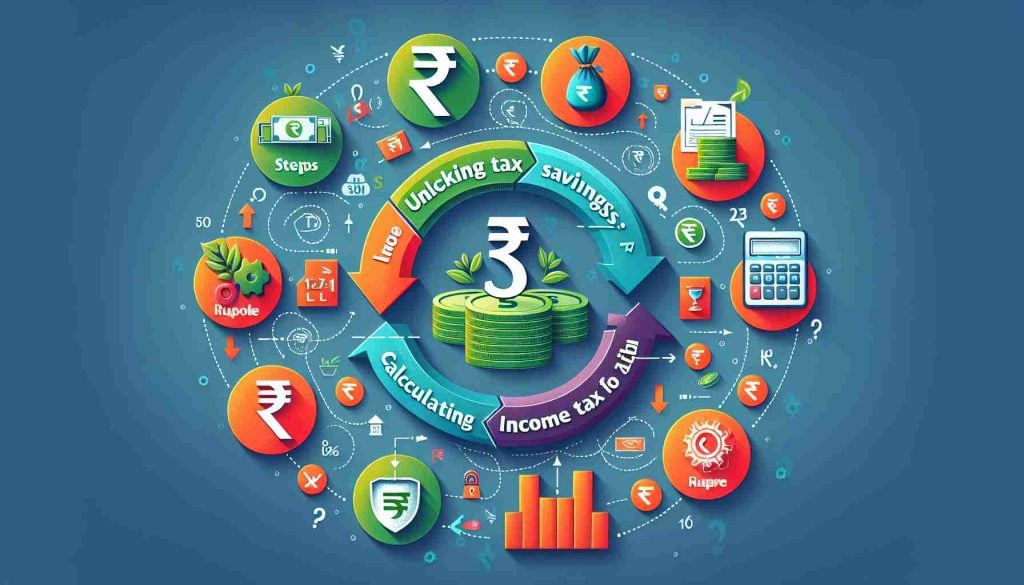- The new Union Budget provides tax relief for individuals earning up to ₹12.75 lakh, with no income tax imposed.
- Those earning slightly above ₹12.75 lakh will face a manageable tax burden, with significant savings as income increases.
- Income up to ₹4 lakh remains tax-exempt, while a 5% tax applies to the next ₹8 lakh.
- Tax rates escalate with income, reaching 30% for earnings over ₹24 lakh.
- Effective financial strategies can aid in maximizing savings under the new tax regime.
As the finance minister presented the latest Union Budget, a wave of relief swept over middle-class earners in India. The announcement revealed that individuals with an annual salary of up to ₹12.75 lakh would no longer be burdened by income tax. But what happens if you’re earning even a little more?
If your salary edges into the ₹13 lakh territory, you can take a deep breath – you’ll only contribute a modest slice to taxes. The new tax regime eases the pressure, providing significant savings as your income rises. For instance, with a salary of ₹14 lakh, you’ll save around ₹30,000 in tax, while salaries hitting ₹15 lakh translate to savings of ₹35,000.
Here’s the breakdown: income up to ₹4 lakh is exempt, while a mere 5% tax is imposed on the next ₹8 lakh. As your income climbs through different brackets, the rates increase, peaking at 30% for those earning above ₹24 lakh. So, the higher you go, the more you’ll have to budget for taxes.
The key takeaway? Strategize your finances wisely to maximize savings! Understanding these new slabs can help you retain more of your hard-earned money. Stay informed, and make tax calculations a breeze!
Unlocking Savings: New Tax Regime Simplifies Income Tax for Middle-Class in India!
As the finance minister unveiled the latest Union Budget, middle-class earners in India experienced a much-needed financial reprieve. With the threshold for income tax now set at an annual income of up to ₹12.75 lakh, many individuals will find themselves relieved from this fiscal burden. However, what about those whose salaries exceed this limit?
Understanding the Tax Structure
For those slipping into the ₹13 lakh range, there are still significant savings to be had. Individuals earning around ₹14 lakh can expect to save approximately ₹30,000 in taxes and those making ₹15 lakh are likely to see about ₹35,000 in savings.
Here’s a concise breakdown of the current tax slabs:
– Income up to ₹4 lakh: Exempt from tax
– From ₹4 lakh to ₹12 lakh: 5% tax on the next ₹8 lakh
– From ₹12 lakh to ₹24 lakh: Increasing tax rates, with the highest reaching up to 30% for earnings above ₹24 lakh.
Taking advantage of this streamlined tax regime can yield substantial savings, with effective financial strategies leading to enhanced income retention for the emerging middle class.
Additional Insights and Trends
Market Analysis:
1. Potential Economic Impact: The new tax regime is anticipated to boost consumer spending, contributing to economic growth as disposable income increases for millions.
2. Tax Filing Trends: With simplified tax calculations, more individuals may be inclined to file taxes and engage with the formal economy, leading to an uptick in compliance rates.
Innovations in Tax Planning:
– Digital Tools: A surge in financial technology (FinTech) applications is helping individuals understand their tax implications and optimize savings through real-time analysis and financial forecasting.
Security Aspects:
– Data Security in Tax Filing: With the introduction of more digital platforms for tax filing, maintaining robust cybersecurity measures becomes essential to protect sensitive financial data.
Key Questions About the New Tax Regime
1. What are the benefits of the new tax slabs for middle-class families?
– The key benefit is the increased exemption threshold which allows families earning up to ₹12.75 lakh to not pay any tax, facilitating more savings and spending capacity.
2. How does the new tax regime affect budgeting for higher income earners?
– Higher earners, particularly those crossing ₹15 lakh, will need to factor in the incremental tax burden but can also utilize available deductions and exemptions to lessen their tax impact.
3. Are there risks associated with the new tax structure?
– While the structure seems beneficial, there may be complications in compliance and limitations related to new deductions, potentially affecting high earners who may not fully understand the implications.
For further details on navigating personal finances amidst these changes, consider these resources:
Income Tax India
Stay informed about the latest tax regulations to make educated financial decisions. Understanding these nuances will not only secure future savings but also contribute to an overall better financial health.
